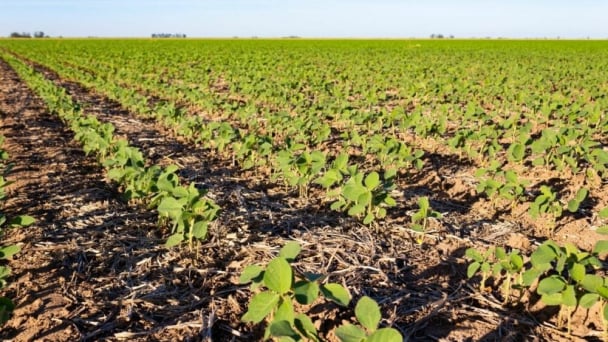May 19, 2025 | 20:22 GMT +7
May 19, 2025 | 20:22 GMT +7
Hotline: 0913.378.918
May 19, 2025 | 20:22 GMT +7
Hotline: 0913.378.918
But what about the outlook for demand? With the United States expected to produce the most soybeans it has ever produced, the hope is the large supply will have somewhere to go. But a cadre of policies — both foreign and domestic — has clouded those pathways.
One of the forefront issues looming over the US soybean market is a potential trade war with China, the world’s largest soybean buyer. In 2018, President Donald Trump imposed a 25% tariff on all aluminum and steel coming from China, which prompted retaliatory tariffs on many US products, including several agricultural commodities.
As a result, US soybean exports to China during the 2017-18 marketing year were the lowest in volume since 2013-14 and the lowest in value since 2009-10, according to the USDA’s October 2018 Oilseeds World Markets and Trade report. The 2018 trade war ultimately cost US agriculture more than $27 billion, with soybeans accounting for 71% of those annualized losses, helping pave the way for other competitive exports to claim market share.
Since then, US soybean exports to China steadily have increased due to a handful of trade negotiations and proposals that have attempted to reset tariffs back to pre-trade-war levels. But the primary supplier for the world’s top soybean buyer continues to be Brazil, and intensifying rhetoric from now-presidential candidate Trump about enacting another trade war with China has renewed tensions within the agricultural communities.
Earlier this year, Josh Gackle, president of the American Soybean Association (ASA), testified to the US House of Representatives about the impact on the industry if trade relations with China are not delicately maintained. In 2022-23, US soybean exports were valued at about $32.6 billion. China accounted for more than $18.8 billion.
China is purchasing US soybeans for the 2024-25 marketing year, but its purchase of new crop supplies was delayed this year, and the pace has been lagging compared with other years during the same period.
“There’s hardly been any new crop business for the United States, so we really need to see sales increase if we’re going to reach the USDA’s forecast for US soybean exports,” said Erin Nazetta, director of food and agriculture research at Broadview Group Holdings. “It will be difficult to completely fill the gap made by China in a year when they’re choosing to diversify away from the United States with other importing countries because China is such a big global buyer.”
Efforts have been made to try to fill that gap from a domestic perspective. A series of new and expansions of existing US soybean crushing plants recently were set into motion with the intent of increasing the domestic soybean crush capacity from 300,000 bushels per day in 2023 to 1,462,000 bushels per day by 2026.
The main driver behind the crush capacity expansion was robust demand for soybean oil, especially from the renewable diesel sector as the US Environmental Protection Agency (EPA) continues to mandate biofuel blending targets for refiners or importers of gasoline or diesel fuel.
However, crush margins have been slashed since January due in part to tumbling soybean oil futures. The nearby soybean oil futures contract has dropped about 13% since the year began, hovering near or just below the 40¢ a pound threshold for the past several weeks, and it may fall even lower as harvest and new crop crushing activities get underway. Compared to a year ago, nearby soybean oil futures were down 40%. Consequently, many crushing plant expansion projects have been delayed or canceled.
“With higher interest rates and production costs, the expansion activity has definitely slowed, and for some facilities that don’t have a shovel in the ground yet, they’re at a pretty high risk of seeing cancellations, all because crush margins are not where they were a year ago to support these expensive projects,” Nazetta said.
Recent US policies also have been weighing on domestic demand opportunities. A proposal by the California Air Resources Board (CARB) would restrict the number of credits given to renewable diesel refiners that use soybean oil and canola oil as biofuel feedstocks. Further, CARB proposed all soybean oil and canola oil utilized would have to meet certain sustainability criteria to receive any credit.
There’s no question there are hurdles ahead for the large US soybean crop, and none of them seems related to weather or other production issues.
(WG)

(VAN) Fourth most important food crop in peril as Latin America and Caribbean suffer from slow-onset climate disaster.

(VAN) Shifting market dynamics and the noise around new legislation has propelled Trouw Nutrition’s research around early life nutrition in poultry. Today, it continues to be a key area of research.

(VAN) India is concerned about its food security and the livelihoods of its farmers if more US food imports are allowed.

(VAN) FAO's Director-General emphasises the need to work together to transform agrifood systems.

(VAN) Europe is facing its worst outbreak of foot-and-mouth since the start of the century.

(VAN) The central authorities, in early April, released a 10-year plan for rural vitalization.

(VAN) Viterra marked a significant milestone in its carbon measurement program in Argentina, called Ígaris, reaching 1 million soybean hectares measured.